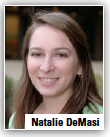Biopharma Sales Operations Stabilizing
Trending now: Growth in sales operations spending driven by changing biopharma challenges and priorities.
 The biopharmaceutical sales operations rollercoaster ride appears to have leveled off, according to TGaS Advisors. A recent TGaS Commercial Operations Landscape Study shows that operations teams’ efforts to absorb change and new capabilities while reducing levels of overall investment have stabilized.
The biopharmaceutical sales operations rollercoaster ride appears to have leveled off, according to TGaS Advisors. A recent TGaS Commercial Operations Landscape Study shows that operations teams’ efforts to absorb change and new capabilities while reducing levels of overall investment have stabilized.
Findings also point to the need for sales operations to evolve more rapidly than ever to stay ahead of continuing changes in the pharmaceutical landscape.
TGaS research across its network of more than 50 pharmaceutical companies shows that investment is being driven by the shifting landscape of specialty salesforces, new data sources, and the changing influence of customer types.
“Sales operations departments are not just investing in more of the same activities, they have had to adjust and will continue to do so," says Curt Staab, a management advisor at TGaS. “The rapidly evolving industry has increased the level of complexity for sales operations teams, which impacts how sales teams are resourced and incentivized as well as how data is managed and reported."
Pharmaceutical Deals Offset Cost of Developing a Novel Drug
With the average cost of getting a novel drug to market at almost $2.5 billion, and few products achieving blockbuster status, deal-making is becoming increasingly vital for pharmaceutical companies to offset rising research and development (R&D) costs, says business intelligence provider GBI Research.
The company’s latest CBR Pharma report states that pharmaceutical companies are considering various strategies to overcome the current challenges, which also include shifts in patent laws and the struggling global economy, with deal-making the foremost method of boosting short-term revenue.
GBI Research’s report also states that overall pharmaceutical deal values remained between $110 billion and $160 billion from 2010 to 2014, but will rise markedly this year, with a total value of $261 billion already amassed by the end of July 2015, and further increased by more recent deals.
 “Deal volume and value have so far increased in 2015 compared with 2014," says Priyatham Salimadugu, analyst for GBI Research. “This creates a pyramid whereby more companies are developing drug molecules at the bottom of the pyramid, than commercializing them at the top, as typified by Pfizer’s recent $160 billion takeover of Allergan. Partnerships were the most popular type of deal between January 2014 and July 2015, followed by licensing deals and acquisitions. Though acquisitions were fewer, the disclosed deal value for this category was the highest."
“Deal volume and value have so far increased in 2015 compared with 2014," says Priyatham Salimadugu, analyst for GBI Research. “This creates a pyramid whereby more companies are developing drug molecules at the bottom of the pyramid, than commercializing them at the top, as typified by Pfizer’s recent $160 billion takeover of Allergan. Partnerships were the most popular type of deal between January 2014 and July 2015, followed by licensing deals and acquisitions. Though acquisitions were fewer, the disclosed deal value for this category was the highest."
Authorized Generics Show Significant ROI
Implementing an authorized generics strategy produces a 5,100% return-on-investment (ROI), higher than any other lifecycle management (LCM) strategy examined in the research, according to Cutting Edge Information.
The study found that drug companies continue to invest in authorized generics strategies to maintain profits and avoid patent litigation. One of the primary goals for pharmaceutical brand teams that undertake an authorized generics strategy is to slow the pace of market share decline after market exclusivity loss, according to the study.
Cutting Edge Information researched the cost effectiveness of major pharmaceutical companies’ authorized generics strategies and highlighted those findings. Although not as popular as other lifecycle management strategies, authorized generics deliver the most substantial ROI among all of the LCM tactics studied. The study found that for every dollar spent implementing an authorized generics strategy, a drug company receives $51 back.
“Authorized generics strategies were rated as highly effective lifecycle management tactics," says Natalie DeMasi, senior research analyst at Cutting Edge Information. “Companies often turn to authorized generics deals to preserve branded drug sales and avoid lengthy court battles when generic companies file a Paragraph IV certification."
The Bioprinting Market Expected to Rise
Global 3D bioprinting market is expected to reach $1.82 billion by 2022, according to a new report by Grand View Research Inc. Rising prevalence of chronic diseases such as chronic kidney disease (CKD), which demands kidney transplantation, is expected to boost the market growth, as 3D bioprinting is a convenient and cost-effective substitute for organ transplantation.
Emerging medical applications of 3D bioprinting such as toxicity testing, drug discovery, tissue engineering, and consumer product testing are expected to further drive the market growth positively. Increasing R&D expenditure is anticipated to be high impact rendering driver for the industry. 3D bioprinting advances in tissue engineering and allows developments to be done using biomaterials which have better biocompatibility.
Moreover, rising geriatric population is expected to assist the market growth, as this demographic is highly susceptible to age related organ deformities.
North America dominated the regional 3D bioprinting market with more than 35.0% share and is expected to grow at a CAGR of 10.0%. Supportive government initiatives to improve healthcare infrastructure coupled with growing disposable income are vital driving factor for this region’s growth.
Drug Repositioning Quickly Meeting Demand for Novel Therapeutics
Drug repurposing is a relatively new approach to the drug development process that is revolutionizing the pharmaceutical industry. The global market for drug repurposing reached nearly $24.4 billion in 2015 and should reach $31.3 billion in 2020, reflecting a five-year compound annual growth rate (CAGR) of 5.1%, according to BCC Research. Its new report reveals that advances in technologies such as in silico drug repositioning should especially stimulate growth in this vital and emerging market.
The U.S., which dominated the market, totaled about $13.7 billion in 2015 and is forecasted to reach nearly $17.9 billion by 2020, demonstrating a five-year CAGR of 5.4%. The non-U.S. market is expected to increase to nearly $13.4 billion by 2020 from $ 10.6 billion in 2015, with a CAGR of 4.7%.
The increased worldwide incidence of cardiovascular and autoimmune diseases and central nervous system disorders diseases has increased demand of repurposed drugs, a trend that should continue over the forecast period. Other key drivers include advancements in technologies, including computational tools such as bioinformatics, chemoinformatics, network biology and system biology. An increase in chronic diseases, a rapidly growing elderly population, and rising healthcare costs are driving the market, as well.
Drug Developers Are Working to Boost R&D Productivity
Drug developers are significantly scaling up their level of process improvements to reduce the time and cost required to bring new drugs to market, according to the Tufts Center for the Study of Drug Development.
“The core challenge is that developing new drugs has become more complex and more expensive than ever," says Tufts CSDD Director Kenneth Kaitin, noting that it takes an average of $2.6 billion and 15 years to develop and win approval for a new drug. In addition, a typical Phase III protocol now entails an average of 167 procedures, 60% more than at the start of the millennium. (PV)


















